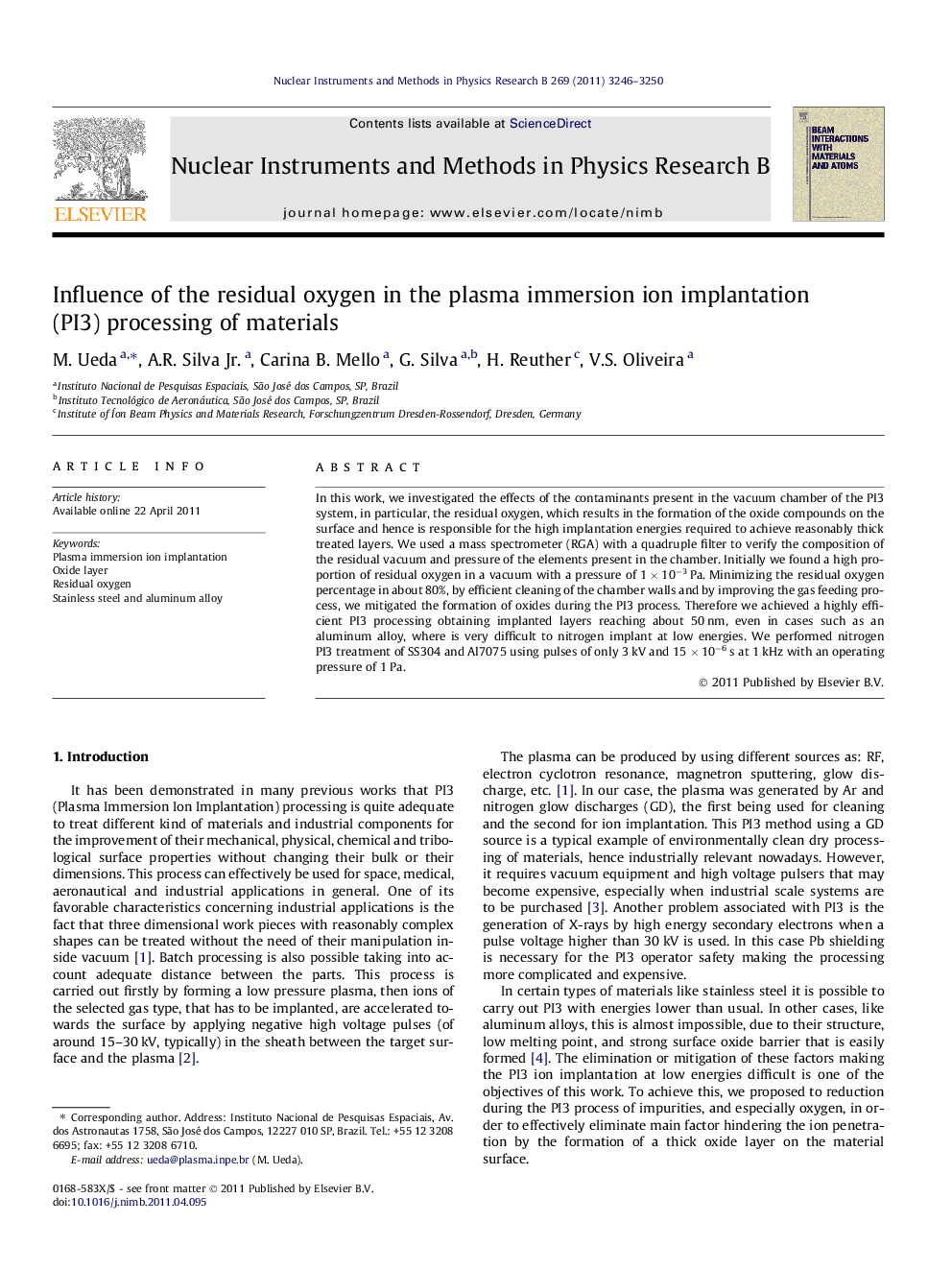| Article ID | Journal | Published Year | Pages | File Type |
|---|---|---|---|---|
| 1683028 | Nuclear Instruments and Methods in Physics Research Section B: Beam Interactions with Materials and Atoms | 2011 | 5 Pages |
In this work, we investigated the effects of the contaminants present in the vacuum chamber of the PI3 system, in particular, the residual oxygen, which results in the formation of the oxide compounds on the surface and hence is responsible for the high implantation energies required to achieve reasonably thick treated layers. We used a mass spectrometer (RGA) with a quadruple filter to verify the composition of the residual vacuum and pressure of the elements present in the chamber. Initially we found a high proportion of residual oxygen in a vacuum with a pressure of 1 × 10−3 Pa. Minimizing the residual oxygen percentage in about 80%, by efficient cleaning of the chamber walls and by improving the gas feeding process, we mitigated the formation of oxides during the PI3 process. Therefore we achieved a highly efficient PI3 processing obtaining implanted layers reaching about 50 nm, even in cases such as an aluminum alloy, where is very difficult to nitrogen implant at low energies. We performed nitrogen PI3 treatment of SS304 and Al7075 using pulses of only 3 kV and 15 × 10−6 s at 1 kHz with an operating pressure of 1 Pa.
